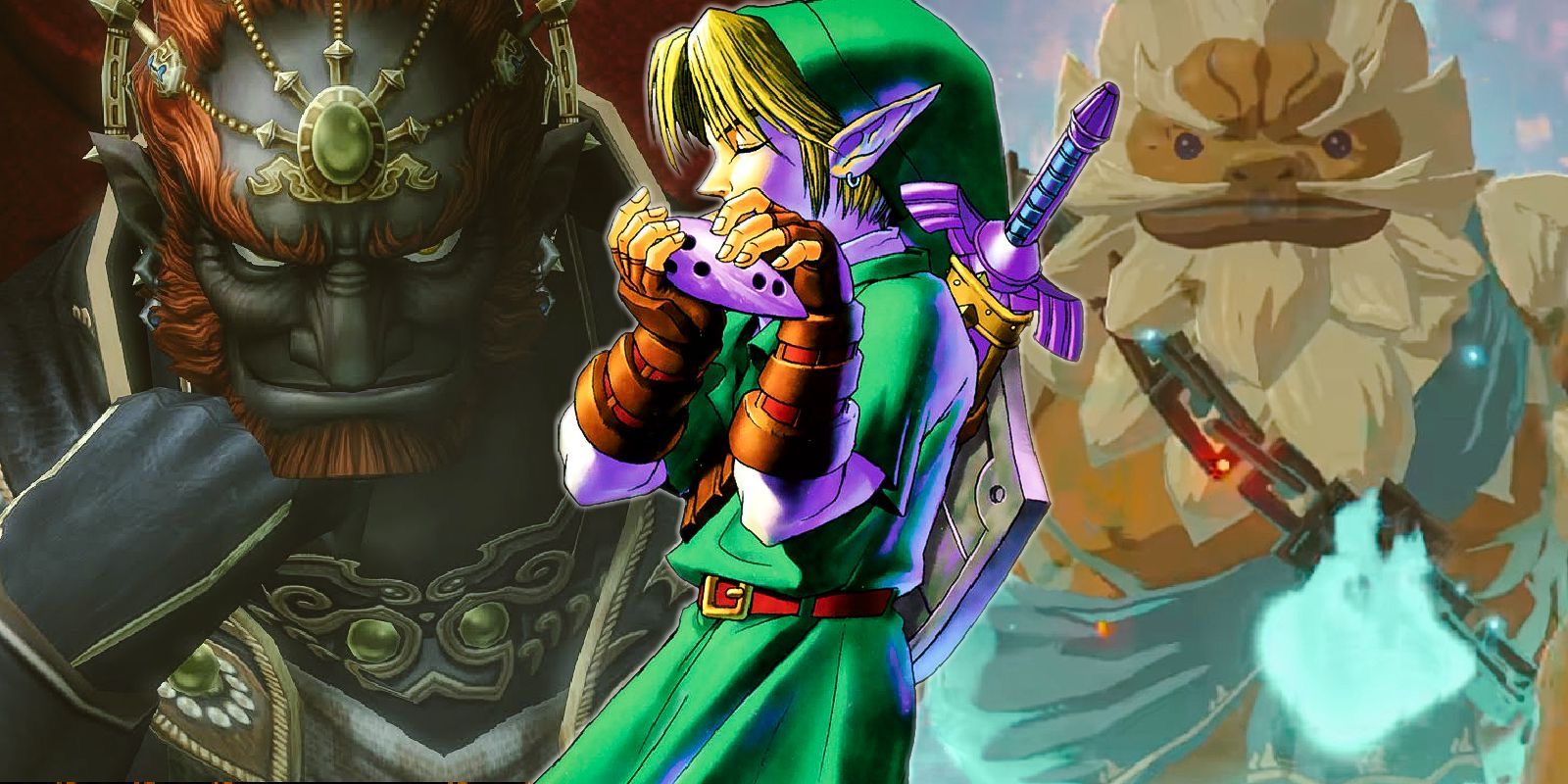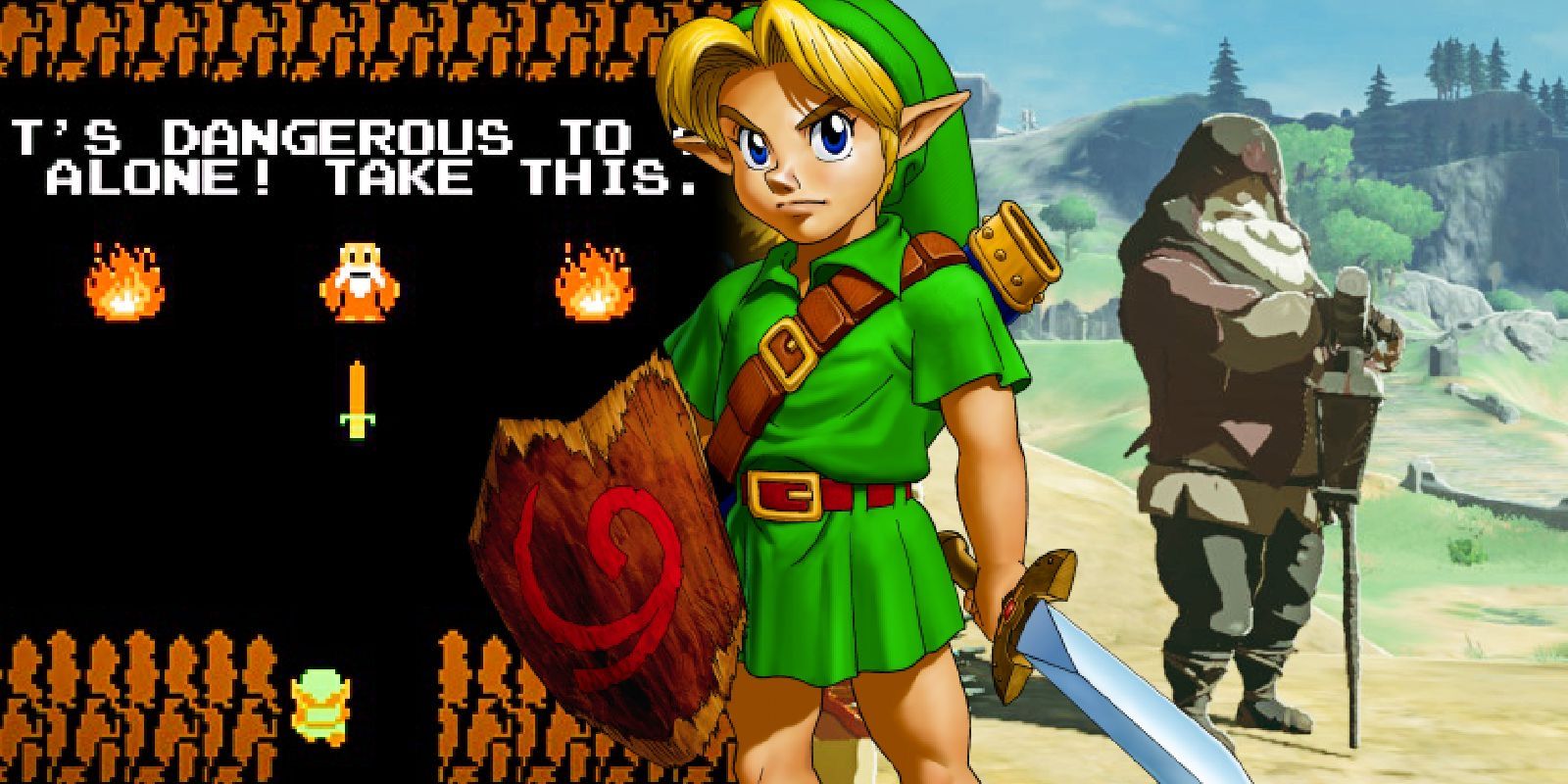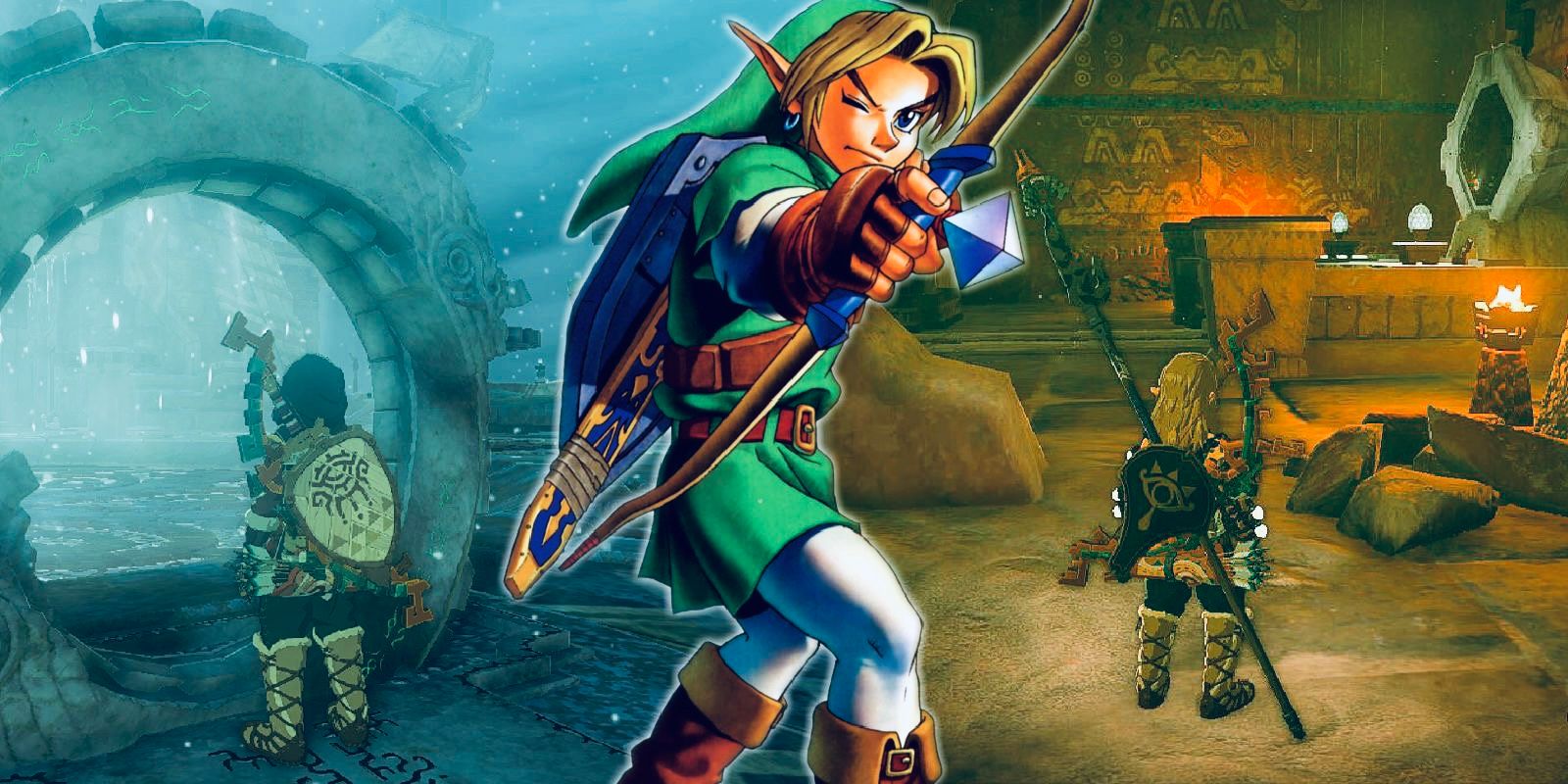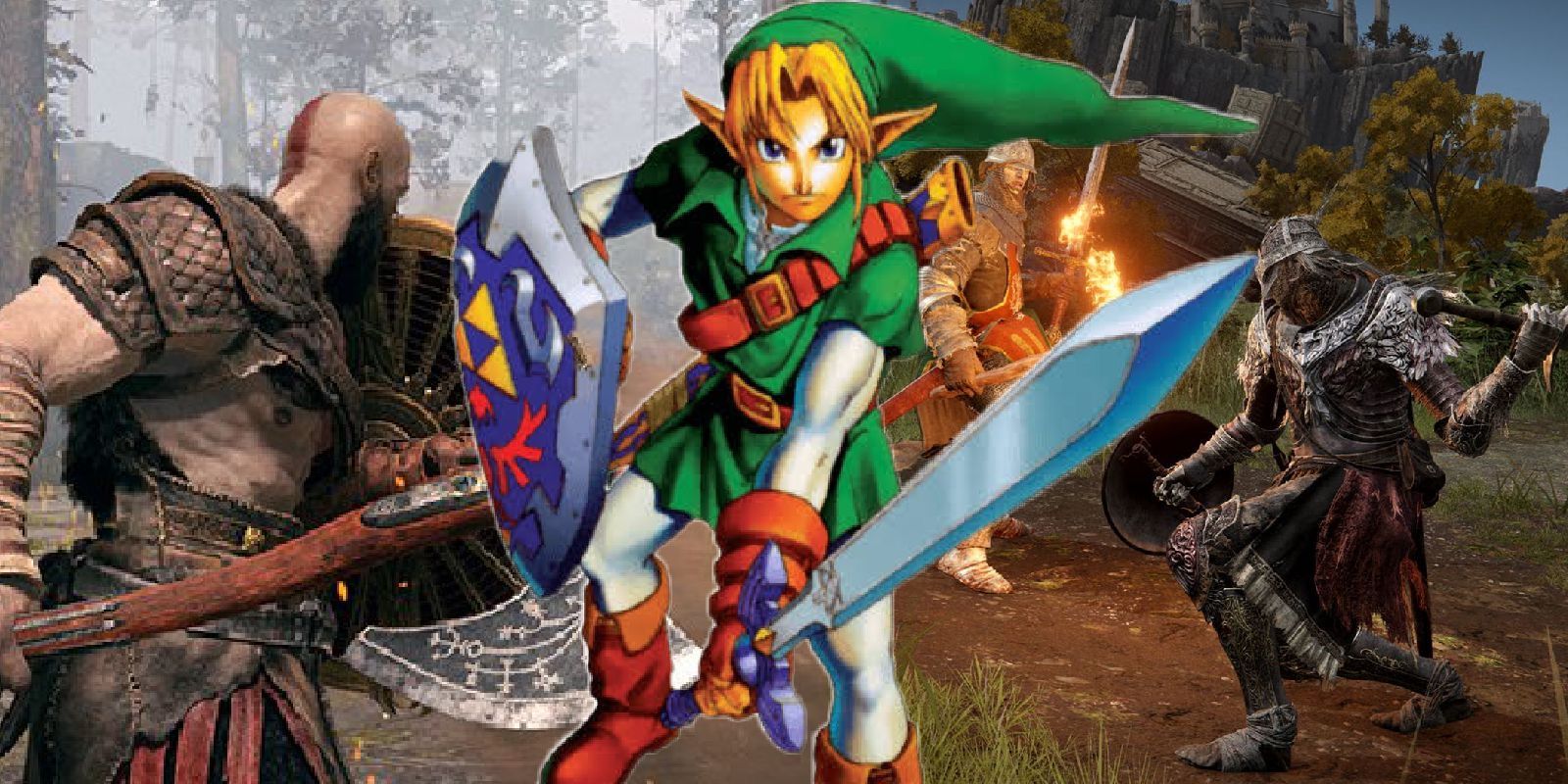The Legend of Zelda franchise has gone through several evolutions since its inception. From top-down 2D to side-scrolling, to 3D and even open-world games, Zelda has gone pretty much everywhere a series can expect to go. Nevertheless, through all the iterations the Zelda series has undergone, The Legend of Zelda: Ocarina of Time stands at the center of the franchise, truly defining what the series is all about:
Ocarina of Time set the stage for every single Zelda game that has been released since. Fans often like to separate the 2D from the 3D Zeldas due to their difference in gameplay styles and obvious graphical differences; and while that makes sense, OoT was a paradigm shift that influenced the subsequent 2D style of games just as much as the 3D. From story elements to gameplay and music, Ocarina of Time just can’t be avoided when fans are talking about the identity and history of the Zelda franchise. While each game has excelled and pushed the series forward in their own ways since Ocarina of Time came out in 1998, no other Zelda since has been quite as influential on both the series and the landscape of video games as Ocarina of Time.
Ocarina Of Time Set Changed Zelda’s Rhythms
The more linear gameplay loop that was introduced in A Link to the Past and Link’s Awakening reached its most focused form in Ocarina of Time. While this concept of more linear gameplay influenced all the 3D Zeldas up until Breath of the Wild, Ocarina of Time still provided a sense of open exploration that was very much Zelda at heart. Aspects of gameplay that fans take for granted now, such as the first-person perspective when firing the bow and the lock-on combat system, have both barely changed at all since their inception in Ocarina of Time. Mechanics like these became staples of the franchise that are still utilized nearly 30 years after OoT first came out, simply because they were so well-designed. The lock-on combat system, called Z-Targeting, also set the stage for the inclusion of another important aspect of Zelda games going forward: the Fairy companion. Working as Link’s helper when targeting people and enemies in Hyrule, Navi was Link’s very first Fairy companion, and easily his most recognizable.
Navi wasn’t the only classic character that was introduced in OoT though. The well-known races of Hyrule like the Gorons, Gerudo and Zora were all first introduced in OoT as well. And of course, along with the Gerudo, Ganondorf’s character made his first appearance in Ocarina of Time. Ganondorf gave a more human aspect to the franchise’s main villain who really completed the Triforce of iconic Zelda characters alongside Link and the Princess. In fact, the most important character of all, Princess Zelda, had her most central role to the game’s story yet in OoT. Expanding on that even further was her transformation into Sheik, who has herself become iconic despite only Ocarina of Time being her only appearance in the Zelda franchise. This multi-layered aspect of Zelda’s character set her up to become the fully fleshed out character she is in the BOTW games.
Link’s relationship with Sheik wouldn’t have been nearly as powerful as it was without their musical duets. While Ocarina of Time didn’t invent the concept of using musical instruments in Zelda titles, it did completely change the role they played going forward. Link had a flute in the very first Zelda game, and his affinity for music was always there, but OoT took the role of music in Zelda to a new level by implementing it as a central part of gameplay. While the Link of Tears of the Kingdom doesn’t play an instrument anymore, he does still hum iconic songs from the series’ past as he cooks. This small Easter egg shows just how important it has become for Link’s character to be musically inclined, even if he doesn’t have the time to practice an instrument as much as he did in past games.
The Link Between Zelda’s Past And Future
As much as it changed the Zelda franchise, Ocarina of Time also retained and refined the tried-and-true concepts introduced in the 2D games. The dungeon format was still there, but OoT‘s temples were even more epic thanks to the added third dimension. The linearity that had begun in A Link to the Past was also mastered in Ocarina, which allowed the game to tell what is arguably the best story in Zelda. The game’s three-dimensional combat took fighting to a new level and the game’s soundtrack updated the classic music of previous games while adding a number of tracks which would go on to become classics in their own right.
Link’s character design as he was presented in OoT was itself an improvement on previous games and it’s stuck around ever since. Adult Link was LInk’s coolest, most mature design to date and it went on to inform the future designs of Link in games like Twilight Princess, Skyward Sword, and Breath of the Wild. Link’s design in OoT was the result of it being the first time that Nintendo didn’t outsource the artwork for a Zelda game, and their added input and focus on that aspect really came through in Link’s aesthetic.
Of all the changes that became lasting staples of the Zelda franchise going forward, the one with the most impact on the series’ overall lore and storytelling was the idea of time travel. Time travel had lasting effects on both the way the developers approach Zelda games and the overall Legend of Zelda mythos. The time travel in OoT was a point of divergence for the franchise, not just for the game’s story, but for The Legend of Zelda‘s lore and timeline. The infamous timeline split is the biggest point of argument and controversy for fans interested in the Zelda series’ grander narrative today, and that’s all thanks to the actions of the Hero of Time over two decades ago.
Despite the timeline controversy it caused, the time travel gimmick was used masterfully in OoT, providing a feeling of natural progression in terms of gameplay difficulty, visuals, and story progression. By the time players collect the Spiritual Stones and pull the Master Sword from the Temple of Time, they’ll have mastered all the mechanics required of them to handle the true challenges ahead as Adult Link. The contrast between the more light-hearted feel of Young Link’s version of Hyrule and the darker, more serious atmosphere of Adult Link’s world perfectly coincide with Link’s growth from innocence to maturity. Both Link and the player grow together in their understanding of the world and in their experience of how things work, making OoT‘s narrative that much more impactful, and the difficulty of its Dungeons more manageable.
Redefining The Meaning Of The “Traditional Zelda Dungeon”
Dungeons have always been central to the Zelda series, from the very first game on the NES. By the time A Link to the Past came out, Zelda’s dungeons had really come into their own and could be pointed to as defining Zelda features. However, with OoT, the term “Zelda dungeon” was once again redefined forever. OoT took all the aspects of previous Zelda dungeons, implemented them, and then brought them to life in ways that were impossible in 2D.
The ability to climb more freely, survey surroundings from first person, and navigate vertical spaces brought several new dynamics to Zelda‘s dungeon-crawling and puzzle-solving. While the Water Temple has become something of a meme in the Zelda fandom because of its frustrating design, it nevertheless demonstrated the newfound complexity that was possible for 3D Zelda when taken to its logical extreme. On the other hand, the Forest Temple is still commonly cited by fans as one of the best dungeons in the Zelda series thanks to its visuals and its difficulty. The Forest Temple’s boss, Phantom Ganon, has also become one of the most iconic recurring enemies in the franchise ever since, even taking a big role once again in Tears of the Kingdom.
Another great precursor to future games in the series was the Shadow Temple, whose moody vibe set the tone for more menacing atmospheres explored in Majora’s Mask and Twilight Princess. While it can’t be considered the greatest in terms of its actual puzzles or exploration, the look and feel of that dungeon alone has made it a fan favorite. Similarly, Jabu Jabu’s belly was one of the most creative dungeon concepts ever, and really demonstrates Zelda‘s ability to take the player places they could only have imagined going before.
Ocarina Of Time Reached Beyond Zelda
Not only has Ocarina of Time become the standard for Zelda games, but it’s also had a lasting impact on every 3D action game that came after it. Its lock-on battle system was entirely new at that time. 3D games were unknown territory for developers when the N64 came out, and Nintendo was still trying to figure out how to make action and combat work in this entirely new dimension. Super Mario 64, Nintendo’s first foray into a 3D Mario Game, was a massive success, but the devs were still concerned about how combat played out in that game. Controlling the camera was difficult and clunky, and fighting enemies didn’t feel as fluid as it should have in the process. Ocarina of Time‘s Z-Targeting battle system was Nintendo’s answer for this problem, and it gave OoT the most natural use of camera control in a 3D game for its time. The lock-on combat innovation is still utilized in critically acclaimed games like God of War and Elden Ring today, showing just how influential Ocarina of Time‘s combat system really was.
In 2022, Ocarina of Time was inducted into the Strong National Museum’s Video Game Hall of Fame, making it the second game in the…
Read More:How OOT Changed Legend Of Zelda And Gaming Forever
2023-08-15 20:27:38




